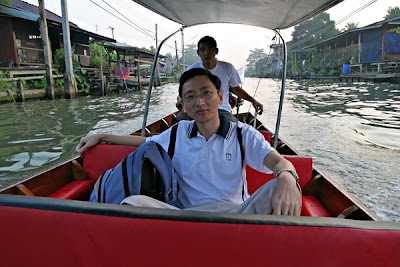Construction of Erawan Hotel (now Grand Hyatt Erawan) was halted by a series of disasters: marble destined for the lobby disappeared at sea; workers died under mysterious circumstances, and cost overruns threatened to crush the project. Spirit doctors, desperately summoned for advice, commanded the hotel owners to erect a shrine for the Hindu deity of Maha Brahma. The mishaps ended and word of the miracle spread.
Today, the Erawan shrine hosts a continual circus of devotees bearing incense, flowers and images of the elephant god Erawan, the three-headed mount of Brahma. Supplicants whose prayers have been fulfilled often sponsor performance of Thai dance.
Erawan Shrine is also famous among Chinese, who mistakenly refer to Brahma as ‘Four-faced Buddha’.
Erawan Shrine...
The statue of Maha Brahma...
Devotee praying to the deity...
Dancers performing traditional dance at the request of devotees. I think the devotee in this picture is a tourist from Taiwan...
Offerings, in the form of elephant...
Reference: Carl






























